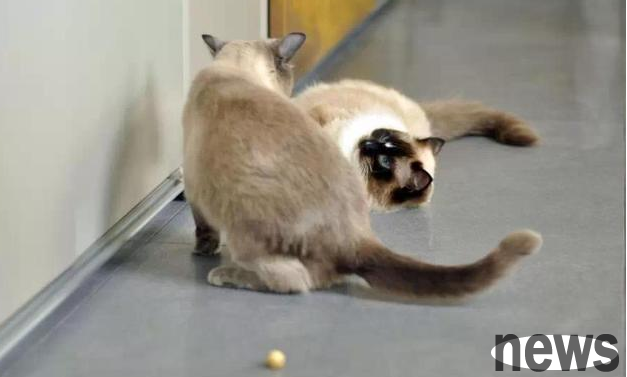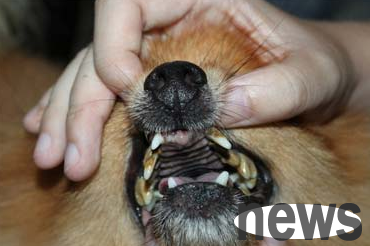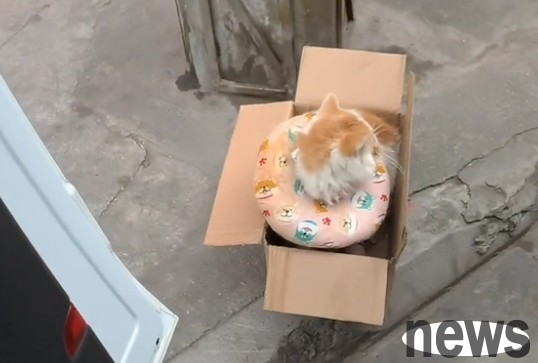Why do cats give their owners food? | Are cats treating you well for food?
Cats are the most popular pets in the world, but this is probably why their lives are getting harder.
Domestic cats are the most popular pets in the world, and are as many as dogs. There is one thing that cats are loved by others - they are both friendly and independent. They basically don’t need much training, they can organize their hair by themselves, and they don’t miss their master very much when they are not here. Once the master comes home, they will come forward intimately. In one sentence: Come and go when summoned.

Even so, cats are still unpredictable and we need to accept some conditions to interact with them - as for what conditions are, they never say.
Can we understand them? I believe it can. I used to be with several cats under the same roof, but I don't seem to know much about them. In contrast, science has begun to reveal some of the true nature of cats, especially their relationship with humans. Now, we should take a look at what we have learned and how to use what we have learned to improve the life of our cats.
I heard...you want to date me?
Walking with people
The interaction between cats and people has a long history. Research on DNA shows that pet cats were the Arabian African wildcats (Felis silvestris lybica), and human domestication of cats began around 10,000 to 15,000 years ago, and the location was in the Middle East.
The first nation to domesticate wild cats was probably the Natufians, who lived in the Levant from 13,000 to 10,000 years ago. Mrs. Natu was recognized as the inventor of agriculture and was also troubled by the cereal-eating mice. It was probably at this time that wild cats went to humans to feed. Mrs. Natu must have discovered the wonderful uses of wild cats - they prey on mice but are not interested in grains - so they are encouraged to stay by their side.
African wildcat.
But those are not what we call pet cats. They are probably more like foxes that appear in cities today, with the ability to adapt to the human environment, but they also retain their own wildness.
Of course, other characteristics of cats must have been noticed by humans: they have cute appearances, soft hair, and have learned to act spoiled to us. Because of these characteristics, we raise them as pets. Gradually, cats sneaked into human residences and human hearts, and for thousands of years, they have changed from wild cats to domestic cats.
Although the identity has changed, three of the cat's four paws are still firmly in the wild. The dog's mind is far from that of its ancestors, wolves, but the cat is still thinking like a wild hunter.
Yes, think. Don't you believe it?
Cats are not products of human creation. At one point, they are different from almost all poultry, that is, they still dominate their lives. Most cats go wherever they want and go wherever they want; the most important thing is that they can also choose their own companions. Unlike dogs, only a small number of cats are intentionally bred by humans. Historically, no one has raised cats to come to visit home, grazing, or assisting in hunting. Cat domestication is mainly driven by natural selection. The cat squeezed into the ecological niche that humans unintentionally opened up and evolved with humans.
For these reasons, cats cannot be regarded as fully domesticated animals, and many of their behaviors also reflect the instincts in the wild. To understand why cats behave in this way, especially why their relationship with us is like this, we must first understand their instincts.
They still carry wildness…although some are less obvious.
Cats can be very intimate with people, but they are also very picky about the people they are intimate. This can be found in their evolutionary history: Wildcats are mainly lone animals, viewing most of their peers as opponents. When domestic cats face other cats, their instinctive reactions are also suspicious and even fearful.
However, human domestication has relaxed their vigilance. There are conditions for human domestication: first, they must live shoulder to shoulder with their kind; second, they must establish feelings with human beings. To meet these two conditions, cats have developed completely new social skills.
The evolution of social behavior may have begun when wild cats gather outside the barn. Any wild cat who continues to show hostility to its kind will be at a disadvantage when catching mice.
Even today, where food often appears, a group of stray cats will pop up wherever local humans allow it. The community is slowly established until hundreds of cats live together densely.
Rectifying the tail is an important signal of social behavior between domestic cats.
Learn Social
In these communities, the basis of society is the collaboration between female cats who are related to each other. Female cats drive them away a few months after giving birth to a male cat, forcing them to live independently in order to prevent in-kind mating. When there are more than one family in the community, they compete with each other. There is far from being harmonious within the community. Cats seem to be unable to maintain friendly relations with a large number of their kind, nor to establish alliances between families like primates. Such complex mediation techniques are not within their capabilities.
However, the transformation from independent life to social life requires a qualitative leap in communication. Cats are animals with sharp minions. Without a signal system for them to interpret each other's emotions and intentions, a small quarrel would escalate into a dangerous fight. And cats have indeed evolved such a system.
"What, do you want to fight?"
As for domestic cats, my research has proved that their most important signal is to erect your tails..
Many cats rub the most vigorously when they are about to feed, and some people criticize them for being purely flattering. In fact, however, few cats only rub their owners before eating; and when two cats rub against each other, they will not get any additional rewards. Therefore, friction between each other is just a expression of love and has no other meaning.
Many cats do not passively accept touching, they will jump on your knees or roll over to invite someone to touch.
The sound of meowing
There is another way for cats to communicate with us, which is to attract our attention, usually through the sound of meowing. Meowing is a natural ability of cats, but they rarely communicate with other cats in this way, while wild cats generally remain silent. Although I was born to know how to meow, every cat had to learn to establish the most effective communication using meow sound.
Once you understand that the owner responds to the meow, many cats will invent a series of calls, then through experiments and elimination, and then learn to make specific sounds on specific occasions. In time, each cat will develop a unique "language". Only this cat and its owner understand this language, but other cats and cat owners cannot understand it.
So, cats are extremely flexible when communicating with humans. Although many people say they are cold, the truth is exactly the opposite. We can think that some of their behaviors are manipulating us, but this manipulation is just the extent to which two friends discuss each other's friendship. The friendship between the two sides is undoubtedly sincere.
Manipulate humans? It's just about putting a photo.
In any case, we cannot think that pleasing relationships with humans is the purpose of cats' survival. Compared to people, they have a stronger attachment to the places they live in. Cats that are well fed and have undergone sterilization will not have the requirement to occupy the land. Despite this, most cats often patrol a small area around the nest, and in order to control this area, they will fight with other cats. What makes domestic cats so persistent about this no longer necessary genetic behavior?
The answer is very simple: the behavior of pet cats has evolved and formed over the past ten thousand years. Before "not long", every cat had to catch prey and therefore had to guard a piece of territory as its hunting ground.
This sofa belongs to me, and I have no nose when I come to grab it! The importance of
territory is prominent in one thing: many pet cats will "disappear" and go out even if they are well cared for. We gained some clues from the conversations of a large number of cat owners (in some areas it reaches a quarter)—when asked where the cat came from, these people all replied, “It was it that came on its own one day.” These are not wild cats, they are other people's pets, but they urgently need their own territory.
How should we use these new knowledge to improve the lives of cats? The most important point is perhaps to keep the cat’s original nature as much as possible—especially when it comes to other cats. Many cats avoid contact with other cats throughout their lives, but their owners force them to live with their distrustful likes, whether it is the neighbor's cat or the second cat. Cats find it is becoming increasingly difficult to avoid contact with similar people. Although cats are the most popular pets in the world, in my opinion, this is probably the reason why their lives are becoming increasingly difficult.




